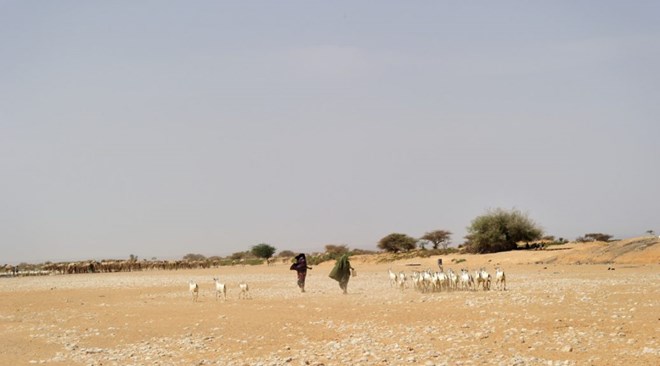
Thursday August 5, 2021

Entrepreneurial Somalis intent on rebuilding their country are investing in renewable energy to fuel Somalia’s power grid through sustainable development, but the ongoing conflict and limited finances create significant challenges for this project.
Over the past year, Somalia has confronted a cascade of challenges. The militant group Al-Shabaab continues to launch attacks throughout the country, bolstered by the January withdrawal of the Somali Armed Forces’ American military advisors, and an ongoing conflict in Ethiopia threatens to undermine Somali stability. In April, Somali President Mohamed Abdullahi Mohamed also made a controversial attempt to extend his term by two years, sparking clashes in the Somali capital of Mogadishu and throwing the nation into a constitutional crisis.
Despite these difficulties, Somalia represents a promising environment for a fast-developing sector of the global economy: the renewable energy industry. In particular, the international community has raised expectations for the future of solar and wind power in the East African country. These predictions, in turn, have fed the hopes of entrepreneurs in a nation whose reputation for political violence precludes many forms of foreign direct investment.
As early as 2013, a working paper by the African Development Bank highlighted research showing that Somalia had more “on-shore wind potential” than 21 other countries in Africa, including Algeria, Egypt, Libya, Mauritania, Morocco, and Tunisia. According to a factsheet prepared by the United States Agency for International Development, better known as USAID, Somalia could produce between 30 and 45 thousand megawatts of wind power and 2 thousand kilowatt-hours per square meter of solar power if the country reached its full capacity.
The task of developing the infrastructure necessary for Somalia to take advantage of its unique position will likely fall to Somalis themselves. Since 1991, the private sector has overseen the provision of electricity in Somalia as the beleaguered central government in Mogadishu struggles to offer public services, a precarious dynamic that incentivizes entrepreneurship.
BECO, Somalia’s largest electric utility and the only provider in Mogadishu and the cities of Barawa, Jowhar, Kismayo, and Merca, started operating a much-vaunted solar farm in the Somali capital last year. The company’s website, which touts its commitment to “environmentally friendly energy” and “reliable sustainable power,” also mentions the launch of a “10MW solar farm project” whose relationship with the Mogadishu solar park, if any, remains unclear.
Even as BECO becomes the face of the renewable energy industry in Somalia, the company faces competition. The startup Samawat Energy, founded in 2016, bills itself as “a women and youth-led renewable energy company” aiming to “provide affordable, off-grid, solar home solutions to residents in Somalia through the use of a micro-leasing, rent-to-own system.”
While BECO and Samawat Energy are already making names for themselves, the renewable energy industry in Somalia has room to grow. A 1991 article in the scientific journal Solar Energy says that “the wind resource appears to be suitable for power production on 85 percentof the country.” REVE, a Spanish magazine focused on wind power, added in 2019 that “Somalia has one of the highest combined wind power and solar energy potentials on the planet.”
Finances represent the biggest obstacle to Somalia realising its potential as a hub for renewable energy. Though BECO plans to increase its solar farm’s productive capacity from 8 megawatts to 100 by 2022, the expansion comes with a price tag of $40 million.
USAID estimates the number of Somalis with access to electricity at 16 percent, speaking to the gap that solar and wind power could fill. Given that Somalia’s external debt stood at $3.9 billion in 2020, though, any effort to build solar and wind farms at scale will likely require foreign direct investment.
The international community is taking steps in this direction. Lighting Africa, an initiative affiliated with the World Bank and financed in part by Italy and the Netherlands, has conducted “an in-depth off-grid solar market assessment” in Somalia in a bid “to improve the enabling environment for off-grid solar businesses, improve affordability, and protect consumers.”
Lighting Africa’s research laid the groundwork for another World Bank programme, the Somali Electricity Access Project, or SEAP. Under SEAP, 100 small businesses and 21,500 households in Somalia will receive “new stand-alone solar systems” by June 2022.
The significance of Lighting Africa and SEAP’s work notwithstanding, these initiatives will only extend the benefits of renewable energy to a fraction of Somalis. Samawat Energy’s website says that four fifths “of the population rely on solid biomass like coal, firewood, and kerosene,” contributing to the deadly effects of air pollution.
To guarantee every Somali access to electricity, improve public health, and relieve stress on the natural environment, Somalia’s electric utilities and the international community will have to invest far more resources in renewable energy.
A third World Bank undertaking, the Somali Business Catalytic Fund, or SBCF, offers a model for how a campaign to expand the availability of renewable energy in Somalia might proceed. The SBCF gave a $75,000 grant to Solargen Technologies, a Kenyan-Somali company, to distribute “solar systems” to Somalis. Despite the small size of the grant, it demonstrates how a partnership between Somali entrepreneurs and international organizations could function.
The international community recognises not only the potential of solar and wind power in Somalia but also the appetite and need for renewable energy in the East African nation. Somali businesses likewise stand ready to strengthen the renewable energy industry’s toehold in the country. To achieve this goal, however, they will need foreign direct investment.